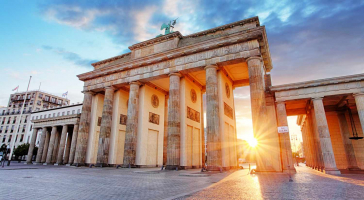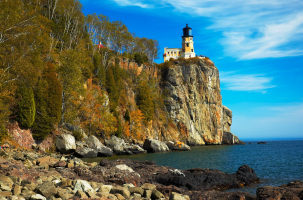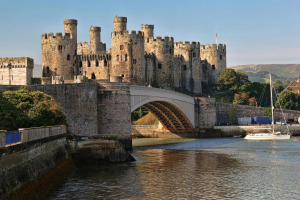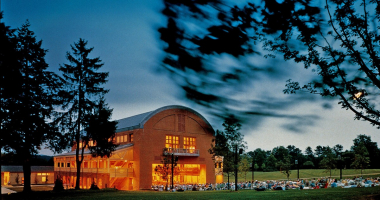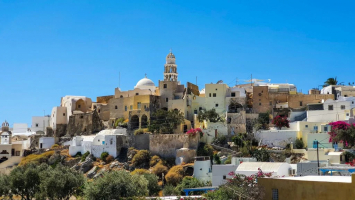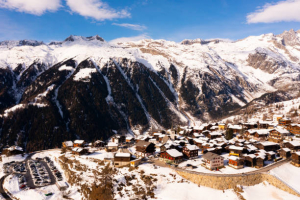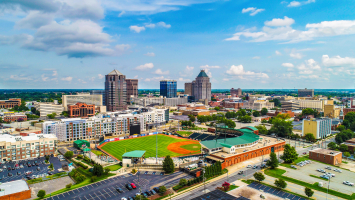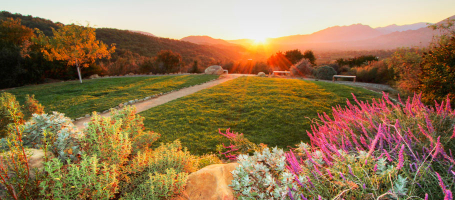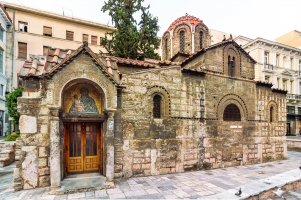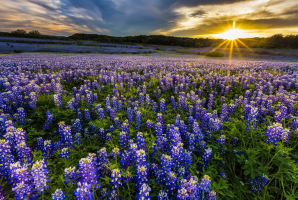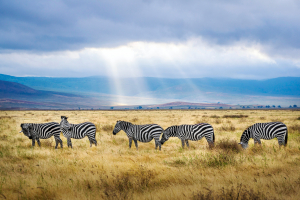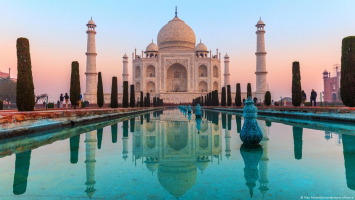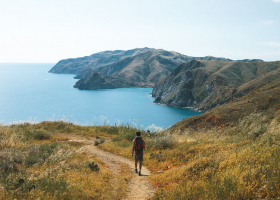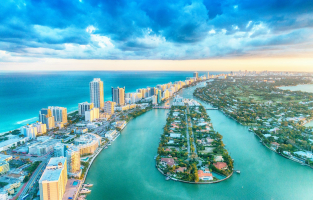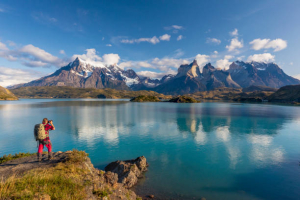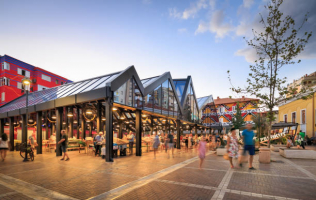Top 12 Best Things to Do in Norway
Norway is a location where the ancient and the modern coexist, with natural wonders contending for space alongside cutting-edge cultural institutions. Oslo, ... read more...the capital city, is as lively as they come, but if you like, you may travel to snowy mountains and magnificent gorges. This is known as the Land of the Midnight Sun, where the days never stop and the sun is always visible at certain times of the year, and it is also one of the few spots in the world where you can see the northern lights, one of the most beautiful natural light displays on the planet. And here are the best things to do in Norway.
-
Norway has marketed itself as "the most beautiful cruise destination in the world" for many years, and the country does indeed offer some of the most scenic places in the world, with majestic fjords, waterfalls dropping thousands of feet down rocky cliffs, and tiny farms clinging to the side of mountains. When you're on a cruise liner, the wonderful clouds, floating across the sky, sometimes fluffy and white, sometimes black, and some infused with bright spots where the light shines through, shimmering on the water, are incredible. Cruising across the Norwegian fjords is never boring.
If you're feeling daring, you may follow the shoreline all the way north into the Arctic to spy on polar bears, abandoned mines, and the midnight sun. The size of Norway's fjords needs to be seen to be believed, the product of epic glacier action over millennia. Cliffs rise on each side of these ice-carved waterways, some with sheer rock cliffs, others with gentle slopes, rich flora, and farmhouses. Hundreds of meandering fjords snake inland from the sea up most of Norway's coastline, and they're an important part of seeing this beautiful area of Scandinavia. The most spectacular views, however, are centered in the west and southwest, accessible from Bergen and Stavanger. The 203-kilometer-long (126-mile-long) Sognefjord, the otherworldly Lysefjorden, and the Unesco-listed Geirangerfjord will leave you dumbfounded.
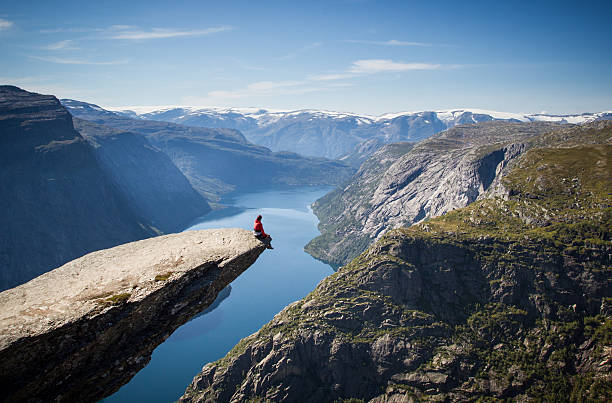
istockphoto 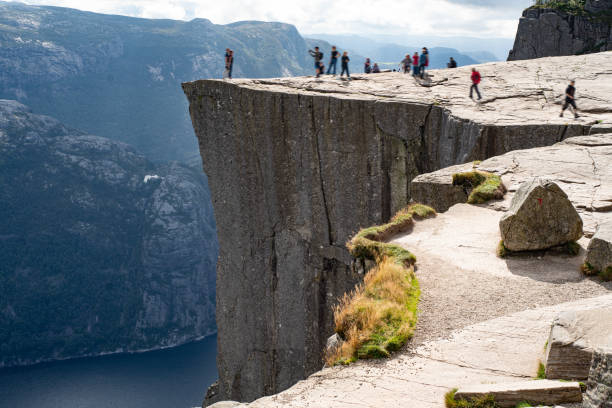
istockphoto -
Norway's home of opera is a magnificent wedge of snow-white marble and glass on Oslo's waterfront, yet the mood is far from aristocratic. The Norwegian National Opera and Ballet call the Oslo Opera House home, as does Norway's national opera theater. The building is located in the downtown Oslo neighborhood of Bjrvika, near the head of the Oslofjord. Statsbygg, the government organization in charge of managing property for the Norwegian government, runs it. The angled outside surfaces of the structure are covered with Carrara marble from Italy and white granite, giving the impression that it is rising from the water. It is Norway's greatest cultural building since Nidarosdomen was finished about 1300.
A-list architects The Oslo Opera House was built by Snhetta to be an extension of the harborfront, allowing you to stroll, run, and climb all over it. Feel the contrasted warmth of the blonde-wood interior for free, or take a guided tour to observe set designers, musicians, and dancers rehearsing for shows. Several art projects for the inside and outside of the Sydney Opera House were commissioned. The most renowned is Monica Bonvicini's She Lies, a sculpture made of stainless steel and glass panels. It is permanently mounted on a concrete platform in the fjord close to the Opera House and floats on the water, changing appearance in response to tides and wind.
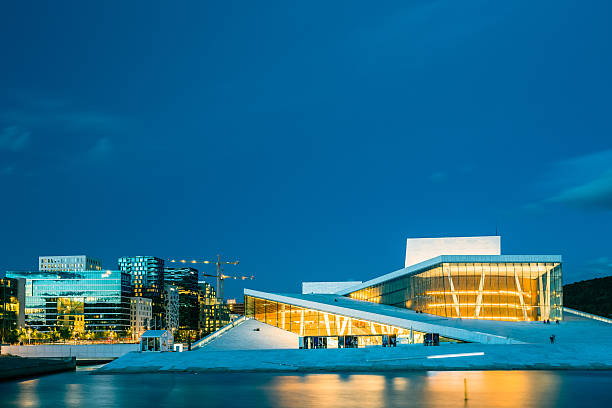
istockphoto 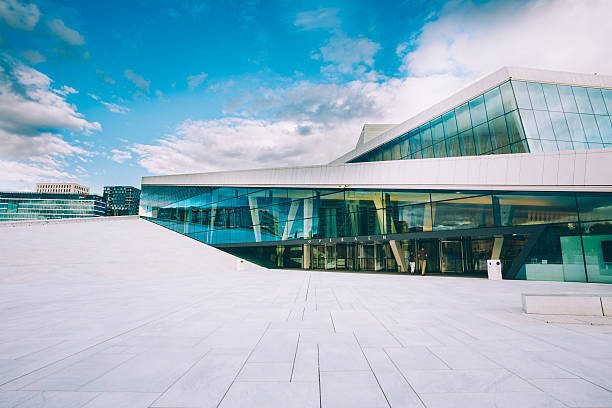
istockphoto -
The Lofoten archipelago, which cuts a jagged profile against the Atlantic horizon, promises wild outdoor activities and attracts artists, surfers, kayakers, hikers, fisherman, and weekend visitors alike. The Lofoten Islands provide a tour among beautiful natural settings at any time of year. Lofoten Islands, located high above the Arctic Circle, have an incredible scenery of beautiful mountains, deep fjords, little fishing settlements, and spectacular beaches. The mountains of the Lofoten Islands are green right up to the peaks in the summer, there is 24-hour daylight, and you may experience the magnificent light of the midnight sun.
During the gloomy winter months, you may witness the mystical Northern Lights and participate in interesting winter sports. Drive or take a bus down the island chain from top to bottom, passing through charming fishing communities with red-painted rorbuer. Meanwhile, modest but intriguing galleries and museums like the Norsk Fiskevaers museum highlight the heritage of the islands' principal industry and their continuing relationship with the sea.
Enjoy a magical vacation in the Lofoten Islands with an adventure RIB cruise in search of wildlife and a Crab fishing safari in quest of the catch of the day. Enjoy magnificent Arctic Tromso, cruises along the spectacular Norwegian coast, a stay in lovely Bergen, a Fjord tour on the UNESCO Naeroyfjord, the famed Flam Railway, and the scenic Bergen line.
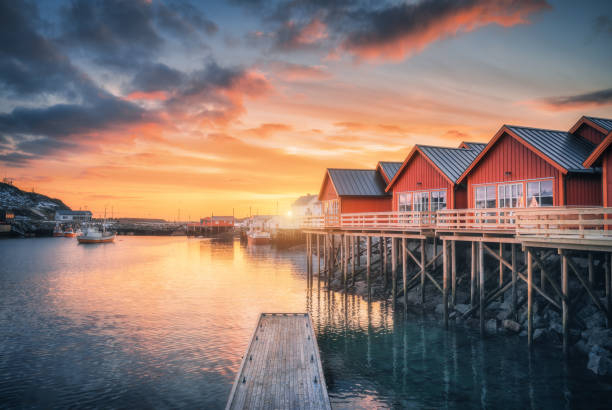
istockphoto 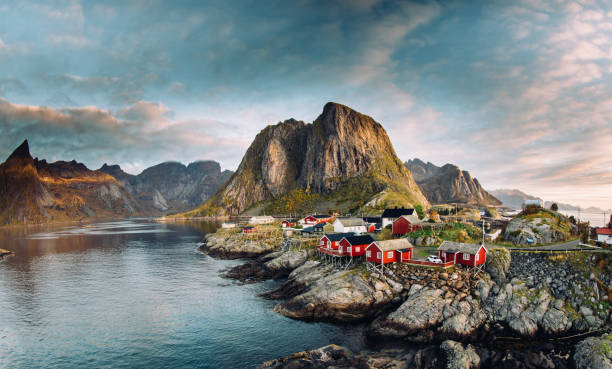
istockphoto -
Bryggen is a historic harbour neighborhood in Bergen, one of North Europe's oldest port cities on Norway's west coast, which was founded as a trading center in the 12th century. The Hanseatic League founded a "Hanseatic Office" in Bergen in 1350. Through Crown privileges, they gradually obtained possession of Bryggen and dominated the trade in stockfish from Northern Norway. The Hanseatic League erected four abroad Hanseatic Offices, with only Bryggen remaining today.
Since the 12th century, the colorful wooden wharves of Bryggen in Bergen have served as the headquarters for the Hanseatic League (a medieval guild of traders) in Norway. Despite multiple disastrous fires, the harborside quarter's value has endured for generations. The tumbledown timber buildings are now home to galleries, clubs, and businesses, and the primary draw is getting lost in the small wooden corridors connecting them. Try to arrange your visit to coincide with the departure of the cruise ship passengers.
Bryggen is a living element of the cultural history that is currently in use in this historic district of the city. There are various attractions in the region nowadays, ranging from the Fish Market to the Bergenhus Fortress. Many of the stores sell traditional and one-of-a-kind crafts. Parts of Bryggen burned down in 1955. In the years that followed, archaeological excavations uncovered a large quantity of artefacts that provided insight into ordinary life in the city throughout the Middle Ages. These discoveries are on display in the Bryggen Museum - Bergen City Museum. The Hanseatic Museum & Schtstuene provides insight into how the Hanseatic merchants lived, worked, and left their imprint on Bergen over 400 years.
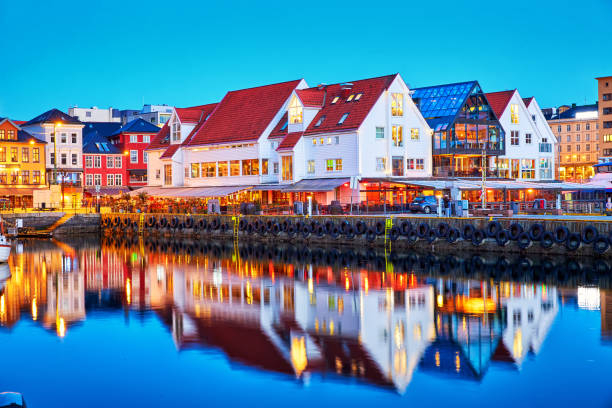
istockphoto 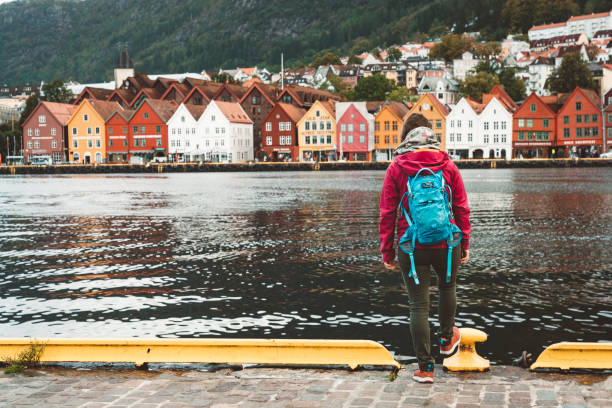
istockphoto -
The sun will be low in the sky around midnight, casting a stunning yellow glow upon the shoreline, cities and villages, jagged mountain forms, and apparently endless inland plateaus. It may occasionally hide behind a cloud or a lofty mountain, but it never sets. The midnight sun descends over Norway's north in the summer, bathing the countryside in a warm glow all night. The phenomena happens because to the tilt of the earth as it circles the sun and can last anywhere from a few weeks in Bod to a few months in Longyearbyen.
Nothing but open water separates you from, Svalbard, and then the North Pole, from atop the sheer cliff leading into the sea at The North Cape, as the sun hovers on the horizon all night. Because the cliff is officially on an island and is not even its northernmost point, it is incorrectly referred to be the northernmost point on the European continent. Nonetheless, it is a more popular destination than the real location, Cape Nordkinn, which lies a bit further east.
The city of Bod is located just north of the Arctic Circle. It's crammed between mountains, hills, and the sea, as is customary up here. From the easily accessible Rnvikfjellet ridge, you can see the midnight sun over the city center, the unique, mountainous island Landegode with its astounding 42 residents, and all the way over the Vestfjord to the Lofoten archipelago. The brains behind the rest area beside the little Lofoten fishing community of Eggum are none other than Snhetta, the designers of the Oslo Opera House and numerous other famous structures across the world. This amphitheatre-shaped pavilion, featuring art by Markus Raetz, provides a free view of the open sea. The Lofoten Islands are one of Norway's most recognized natural attractions, and the midnight sun may be seen from a variety of positions around the archipelago.
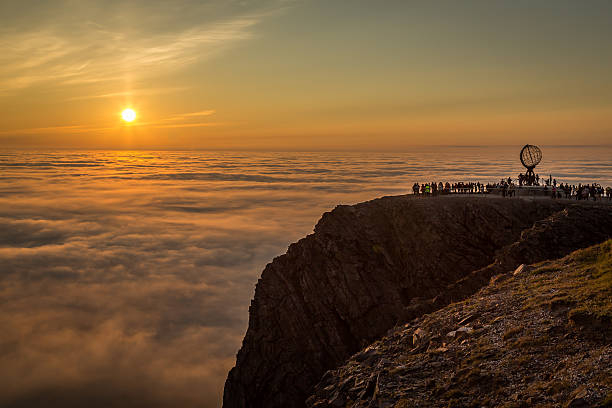
istockphoto 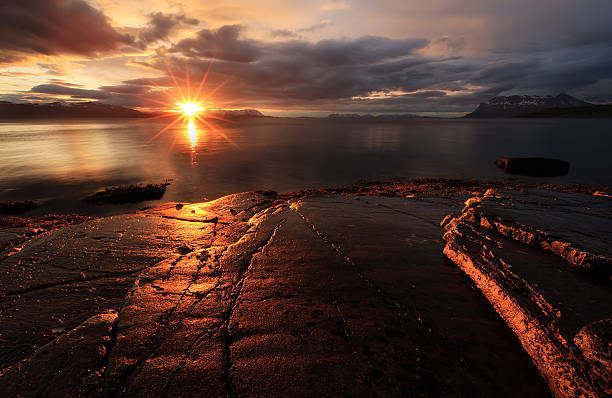
istockphoto -
These shapeshifters of the Arctic night sky, as elusive as they are enigmatic, swiftly take on the feel of a fable. One minute, the ethereal white or green curtains of light with a violet streak take on forms reminiscent of northern mythology - a palace of lights, a Sámi fire in the forest, the prow of a Viking ship. Then they vanish, only to reappear on a new horizon, dancing across the sky in the shape of a sea horse or crescent moon.
Of course, the aurora may take on an unlimited number of shapes, colors, and intensities. They occasionally appear in all their brilliance, a rainbow range of deep blues, indigos, and greens. On other instances, the effect is more delicate, like an eerie white-grey, translucent cloud shadow that drifts over the sky, refusing to take on recognizable form before dispersing on the breeze against a backdrop of stars. And there are instances when it just does not appear.
During years of extraordinary solar activity, the northern lights might appear at lower latitudes. Most sites in Norway north of the Arctic Circle, however, give the potential to see the aurora in the night sky from October to March; clear skies are more likely from December onwards. A cloud-free sky is the most critical factor for witnessing the aurora borealis, aside from a huge slice of luck - if the cloud cover shows no indications of clearing, you might as well head indoors.
Although visitors and residents alike report fantastic light shows in cities such as Troms (which is accessible to the rest of Norway and farther afield by regular flights), the absence of artificial or human-produced light is a key factor in receiving the full impact. And, according to some expert aurora watchers, the best viewing hours are from 6 p.m. to midnight, or, more precisely, from 10 p.m. to 11 p.m.
Another key factor to consider, particularly if you intend to capture the lights, is the backdrop. If you see the lights while surrounded by mountains, you may miss half of the display; an open horizon (such as the ocean or the huge plains of the Finnmarksvidda plateau surrounding Kautokeino or Karasjok) is perfect. Open water, especially a quiet lake (finding such a lake that isn't frozen in northern Norway might be difficult) can provide some stunning reflections.
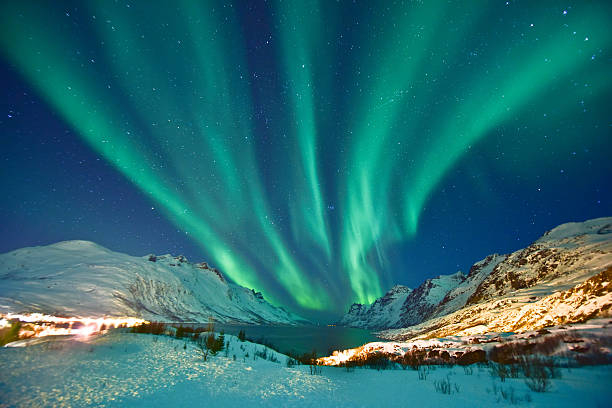
istockphoto 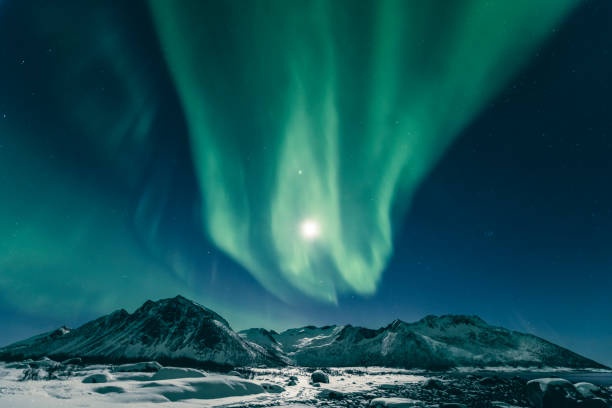
istockphoto -
The entire population of Sami in Norway, Sweden, Finland, and Russia is believed to be around 80,000, with Norway housing almost half of them. Northern Norway, particularly the county of Finnmark, is home to the great majority of settlements. However, there are Sami communities as far south as Trndelag. Many people believe that Sami customs solely consist of colorful clothes, traditional handcraft goods, and lassoing reindeer. But the Sami legacy may also be seen in rap music, modern architecture, contemporary art, and cutting-edge design. The contemporary Sami may be both an award-winning filmmaker and a snowmobile reindeer herder. They may, nevertheless, have a strong connection with nature.
When visiting Northern Norway, you may also learn about the Sami way of life. Camp beneath the northern lights in a traditional lavvo (Sami tent), get up up and personal with reindeer, or visit a Sami art show. If you want to understand more about Sami culture and traditions, attending a Sami festival is a fantastic (and enjoyable!) way to start. The worldwide indigenous festival Riddu Riu Festivàla in Manndalen, Troms, attracts artists and festivalgoers from all over the world every July. Riddu Riu is a festival unlike any other, with music beneath the midnight sun and a diverse range of activities.
In Troms, Sami Week celebrates everything Sami in connection with their national day on February 6. Try reindeer racing, joik, or enjoy music, discussions, and ample amounts of the traditional food bidos. Also, don't miss the national lasso tossing championship! The Sami Easter Festival in Kautokeino has become a major element of their culture, attracting families and people of all ages. The schedule includes concerts and exhibitions, as well as entertaining events such as scooter cross and reindeer racing. Other events to attend include Alta's Sami Music Week, Tana's Winter Festival, Karasjok's Sami Easter Festival, Gállogieddi's Márkomeannu, and Lebesby's Festival Skábma.
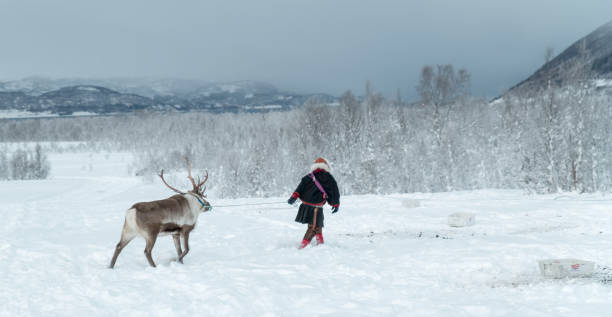
istockphoto 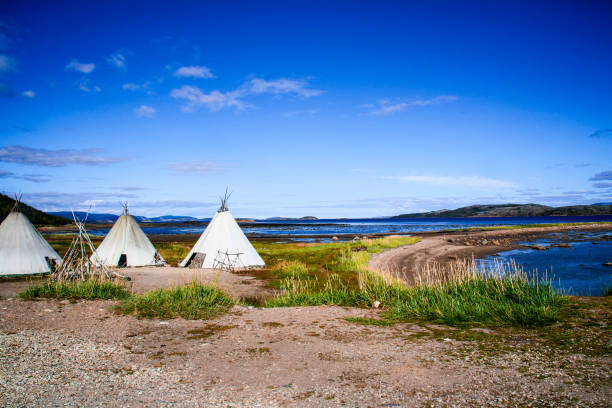
istockphoto -
Preikestolen (also known as Pulpit Rock) is an angular platform that juts out from a cliff face over 600m (1969ft) above the Lysefjord near Stavanger, seemingly defying the rules of physics. This geological anomaly has adorned the Instagram feeds of many a social media star, but its fame should not deter you. The eight-kilometer trip begins at Preikestolen Fjellstue, a mountain resort. Allow four hours for this somewhat difficult roundtrip. Join one of the daily guided walks that operate from April to October or see the cliff from a tourist boat on the fjord - some tours offer combination hikes and cruises.
From May through October, the hiking season is open. Preikestolen is accessible all year, although from November to April, specific equipment and, ideally, a guide are required. In the region, you may hire head lamps, crampons, and a guide. If you opt to travel without a guide, it is critical to heed the instructions of the Preikestolen employees in the parking lot.
If you're worried about sharing Preikestolen with too many people, start the hike at night, and you'll have a touch of enchantment when the light comes up. Alternatively, go in the afternoon. Arrive early in the low season to hike through sun-dappled woods, climb steep stairs set down by Sherpas, and walk alongside soothing plunge pools. The four-hour round-trip requires reasonable fitness, but the breathtaking vistas from Preikestolen to the fjord beneath are worth every step. If this fantastic experience has left you wanting more, Norway has a plethora of other walks for you to enjoy on your next holiday.
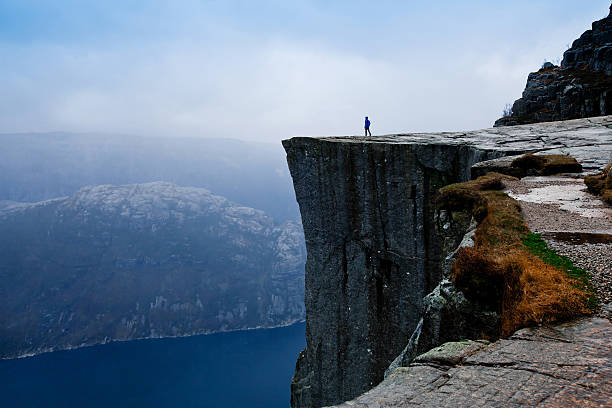
istockphoto 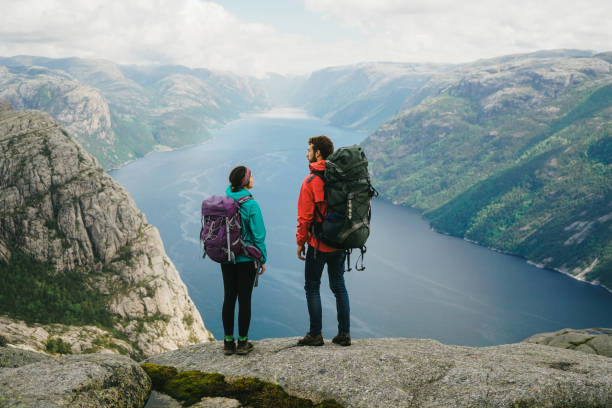
istockphoto -
Trondheim's Nidaros Cathedral is an extravagant medieval masterpiece. It's a big cry from its humble origins in 1070 as a timber church on Viking King Olav's burial. The cathedral is erected atop the burial of St. Olav, the Viking ruler who converted Norway to Christianity and became "Norway's Eternal King". Throughout the Middle Ages, this was a towering emblem of religious faith and the Church's dominant status.
During the Middle Ages, Trondheim, or Nidaros as it was originally termed, was the most important pilgrimage destination in Northern Europe. Pilgrims traveled long distances to see St. Olav's grave. The pilgrimage ritual has been restored, and people are pouring to Nidaros Cathedral once more.
Nidaros Cathedral is the northernmost Gothic medieval cathedral in the world. Visits to the cathedral provide seasonal experiences. Thousands of soapstone sculptures give the cathedral a wonderful aspect throughout the darker seasons of autumn and winter. The sun beams through the colorful rose windows throughout the spring and summer, providing a beautiful glow through the church. The magnificent facade of the world's most northerly Gothic church is embellished with 76 sculptures of saints and biblical characters. The ambiance inside is almost eerie, as the gloomy lighting draws your attention to the 12m-high (39ft) 10,000-piece stained-glass rose window. Climb the tower's 172 narrow stairs in the summer for panoramic views over Norway's medieval capital.
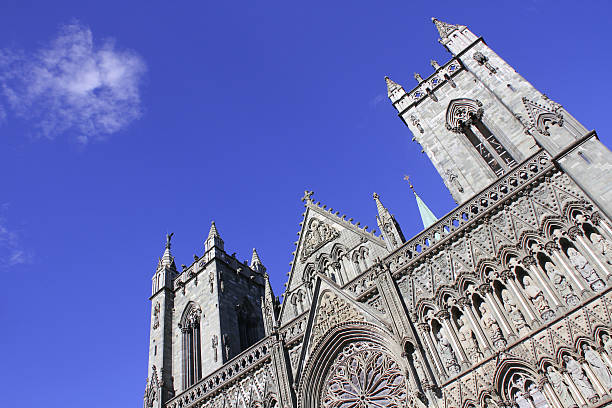
istockphoto 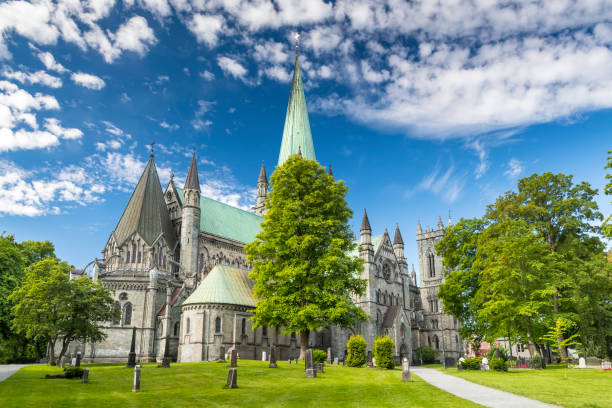
istockphoto -
Engineers have worked tirelessly to construct railway lines over Norway's challenging terrain. The result is some of the most beautiful adventures on the planet! The Rauma Line, Bergen Line, and Flam Railway all contribute to Europe's most magnificent rail excursion. The magnificent journey from Oslo to Bergen across the Hardangervidda plateau is the country's most well-known train excursion. Deep fjords cut through snowcapped mountains in western Norway, and inaccessible valleys are only accessible by technical marvels such as trains and highways. From Oslo to Bergen, travel over some of the world's most magnificent trains and roads to enjoy the country's breathtaking natural splendor.
However, the 10-hour journey via the Nordlandsbanen rivals the southern route. The voyage follows the coast and rolls through the harsh mountainous environment of the Saltfjellet-Svartisen National Park, crossing the Arctic Circle and linking Trondheim to Bod. Travelers should be in excellent health and comfortable walking or standing for lengthy periods of time when boarding trains and boats. Excursions involve walking on pathways with steep ascents and descents, negotiating uneven terrain, and ascending stairs without handrails.
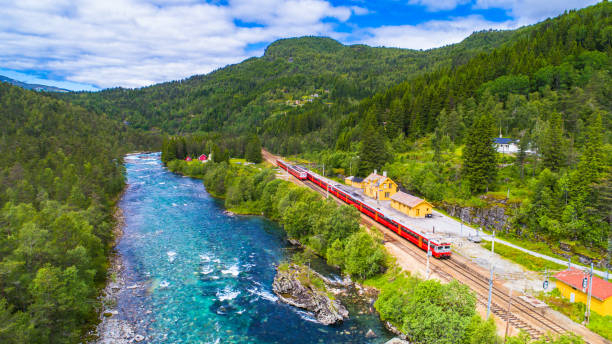
istockphoto 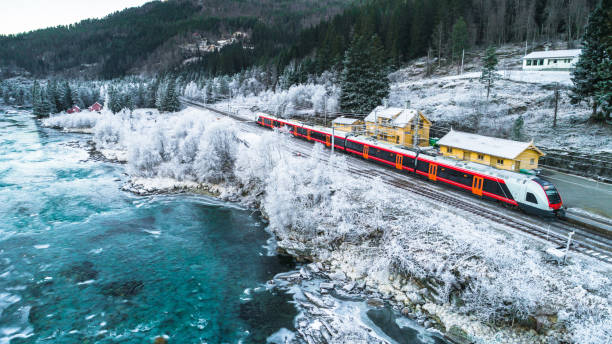
istockphoto -
Wild camping is one of the greatest ways to explore the magnificent environment that Norway has to offer, and it is a favorite activity among both Norwegians and foreigners. Not only do you receive a one-of-a-kind experience, but it's also absolutely free. Norway's 'freedom to wander' allows wild campers to visit its beaches, mountain ranges, and national parks. Pitch your tent under the stars, surrounded by some of the most breathtaking landscapes on the planet. The freedom that comes with wilderness camping comes with responsibilities: don't camp too near to dwellings, obey any fire regulations, and abandon your campsite as if you'd never been there.
When it comes to putting up a tent in the wilderness, the fundamental guideline is to keep the tent at least 150 - 200 meters away from the nearest cabin or house where people dwell. You must also put up your tent on what is called utmark, which may be translated as "unfenced territory". So, keep away from gardens, fields, farms, and other places where there is activity and instead go into the woods. You are only permitted to spend two nights in the same location. So you'll need to relocate your camp and tents after two nights. There is no specific rule regarding how far you must relocate, but the common consensus is that you must move at least 50 meters away. It is also common to remain for more than two nights if you are remote from civilization (aka in the middle of nowhere). No one will mind if you remain for a week or two as long as you don't bother anyone.
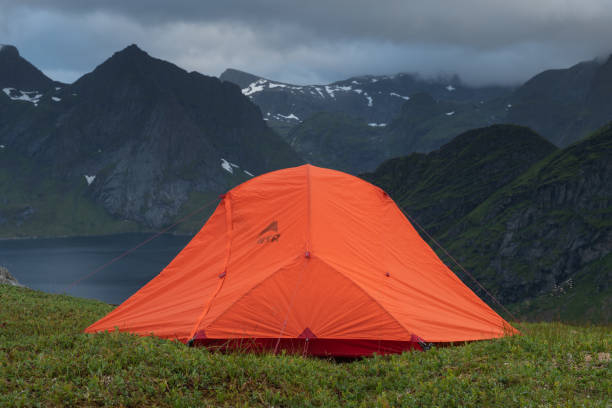
istockphoto 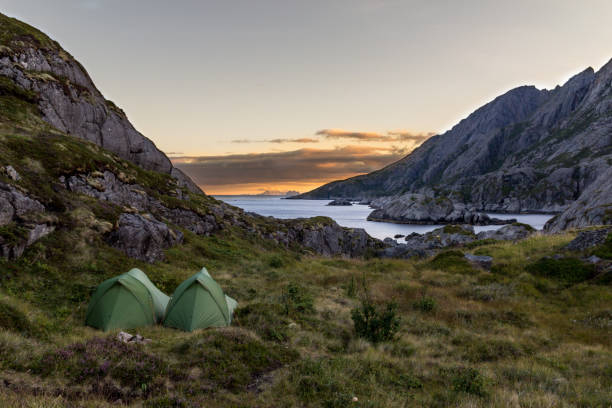
istockphoto -
The polar bear is one of the most beloved creatures on the planet. Many people want to visit polar bears in their natural environment since they are the endangered poster child of the climate change campaign. Polar bears are difficult to see since they dwell in some of the world's most remote and inhospitable environments. Seeing polar bears in Svalbard is a once-in-a-lifetime experience. 3000 polar bears visit the Svalbard archipelago on a regular basis. This polar bear population outnumbers the human population of Svalbard, which is slightly over 2700 people. However, this polar bear population is not a residential one. Polar bears can only be found in Svalbard at particular periods of the year.
The ideal time to observe polar bears in Svalbard is between the months of May and September. When the ice pack around Svalbard melts, polar bears go there to hunt. This is also when you can see polar bears from the sea, which is the easiest and safest method to see them. During the winter, the waterways ice over, making Svalbard polar bear excursions impossible, and the polar bears themselves migrate north.
Svalbard is teeming with polar bears, literally thousands of them. While this is exciting news, it does not guarantee sightings. Polar bears are both tough and simple to locate. Simple, because there isn't much to hide them except ice and ocean. Difficult because they are the color of the ice they swim and hunt on, polar bears in Svalbard might be difficult to notice from a distance. If you go looking for them at the correct time of year, your chances are excellent, but nothing is certain. The longer you spend in Svalbard looking for bears, the more probable it is that you will spot one.
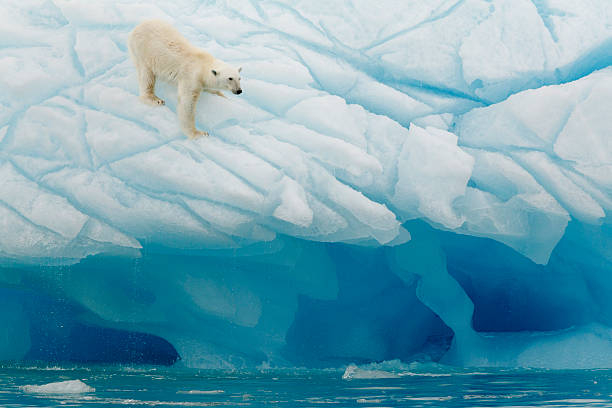
istockphoto 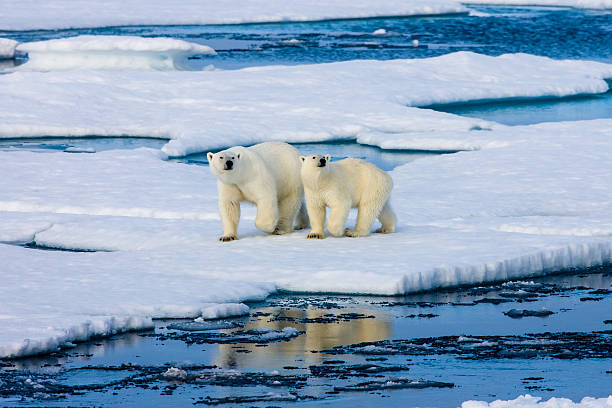
istockphoto














